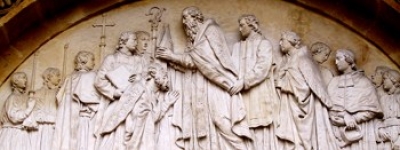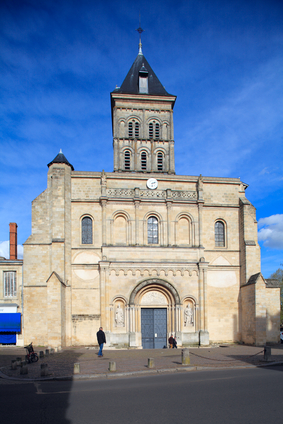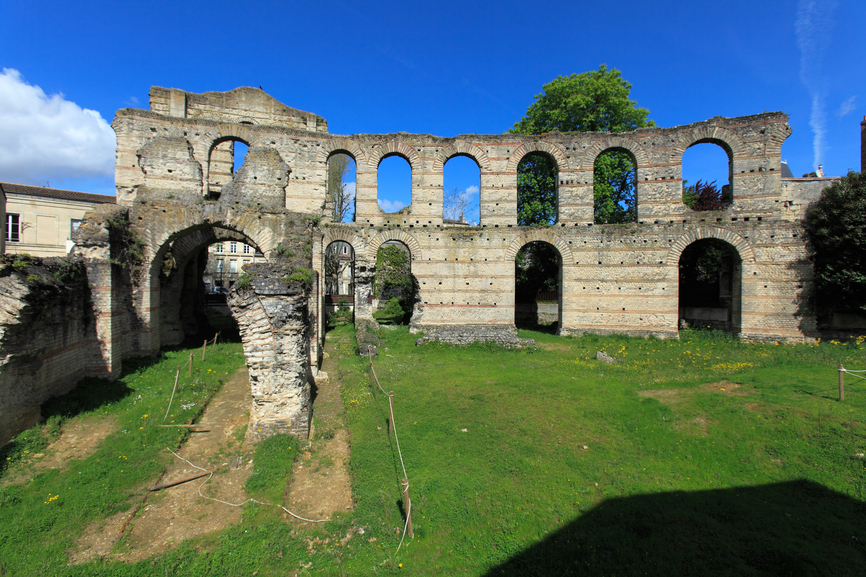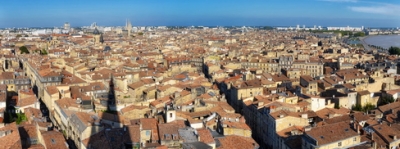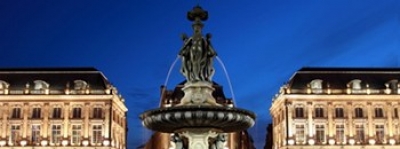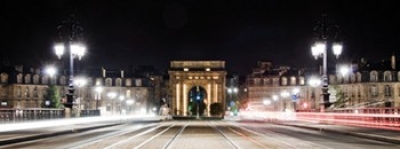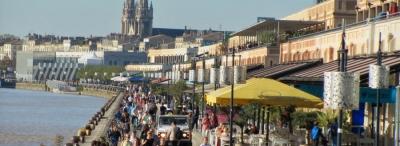Basilica Saint-Seurin
Place des Martyrs de la Résistance, 33000 Bordeaux
Website - Tel: 05 56 48 04 24.
Open from Tuesday to Sunday: 8:30 a.m. to 7:45 p.m. (closed on Monday and Sunday afternoon).
Free admission.
Tours offered from June through September, Saturday: 2 p.m. to 5:30 p.m.
Visits of the necropolis: daily from June through September. Full price/ reduced price: €5/ €3.50. Information available at the Tourist Office.
The Church of Saint-Seurin was named after the fourth bishop of the city. Built in the 6th century, it is the oldest place of worship in Bordeaux, and its crypt is one of the oldest historical remains of the city.
Although many additions have altered the Gothic style over the centuries, it remains a masterpiece of Romanesque art. On the south portal, the tympanum traces the Last Judgment. The crypt contains an impressive Christian necropolis from the 4th to the 18th century. Today, it tells the story of Christianity in Bordeaux. The legend says that this cemetery was consecrated by Christ and that some of the martyrs who died in Roncesvaux were buried there.
It is also said that this is where Charlemagne left Roland’s Horn. In the Middle Ages it was an important stop for pilgrims on the Pilgrimage Route of Santiago de Compostela. In 1998, it was included on the World Heritage List.
Palais Gallien (2nd century)
Rue du Docteur Barraud, 33000 Bordeaux
Tel: 05 56 00 66 00.
Price: €3.
Open daily from June to September
Guided tour in French and English at 10:30 a.m. and 3:30 p.m.
In July and August, guided tour at 9:30 p.m.
Information available at the Tourist Office.
The Palais Gallien is the only visible remains of the Roman city of Burdigala. This imposing amphitheater (130 meters long and 110 meters wide) could accommodate more than 15,000 people attending the games of the Circus. Its three levels of archways were built in alternating brick and stone. There are only a few spans and arches from the original great amphitheater. Today the palace gallery features paintings from the 19th and 20th centuries.
Curiously, this palace is named after the wife of Charlemagne, Galiene. Indeed, in the Middle Ages legend had it that the ruins of the Gallo-Roman building were the remains of a palace that Charlemagne had built for his wife. Another version: it was the emperor Gallienus who had it built.
Place du Champs de Mars, 33000 Bordeaux
Opening during winter: 7 a.m. to 6 p.m. and until 9 p.m. in summer.
The 18th century saw the emergence of the naturalist movement in which urban spaces became a place of leisure. Cities then multiplied the creation of gardens. In Bordeaux it was the Intendent Tourny who decided on the creation of the current 10-hectare public garden. During the Revolution the garden was transformed into a Champ de Mars where official ceremonies took place. Then under Napoleon III it took on the configuration that can be seen today.
The many mansions that border the garden create an architectural unit contributing to the magic of the area. Decorated with botanical discoveries and activities for children, this English park provides a well-deserved break for visitors. Very interesting and rich botanical garden including 2500 species of plants.
For children : 10 hectares of garden with many attractions: puppet theater, boats, carousel, playground ...
< Home Bordeaux - Port of the Moon
